SciArt Profile: Elsa Quicazán-Rubio
Posted by the Node, on 6 September 2021
In the tenth SciArt profile of the series, we meet Elsa M. Quicazán-Rubio, a science communicator striving to bring the topic of biomimicry to a wider audience
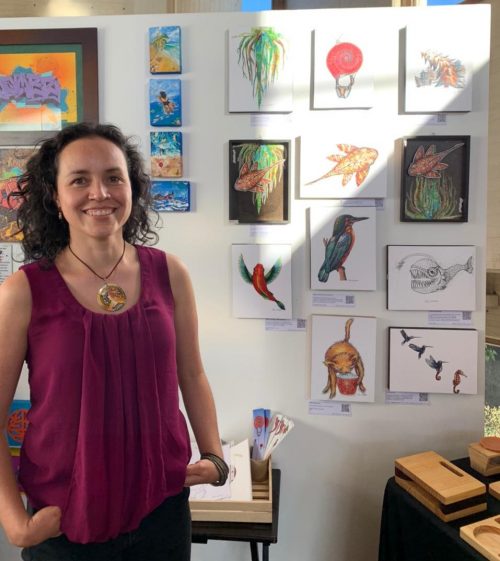
Where are you originally from, where do you work now, and what do you work on?
I am from Colombia, where I studied my undergrad in Biology and wrote a thesis on biomechanics of hummingbird flight. This subject captivated me, and I completed a Masters degree at the University of California Riverside, USA, and an internship at the Wageningen University and Research, in The Netherlands. I then went back to The Netherlands to do a PhD in fish swimming.
During the pandemic, I was able to give shape to one of my dreams, Bioinspirada, a combination of Art and Science, connected mainly by Biomechanics and Biomimicry. I learnt how to make a website and launched Bioinspirada.com in January 2021. Since then, the ride has been awesome. I currently teach Biomimicry at the Colombian University EAN, collaborate in a team to develop Biomimicry workshops for kids at the Andes University and joined the creative space Taller Casa Quemada. I also participate as a speaker on subjects such as the role of females in science, biomimicry, and science communication.
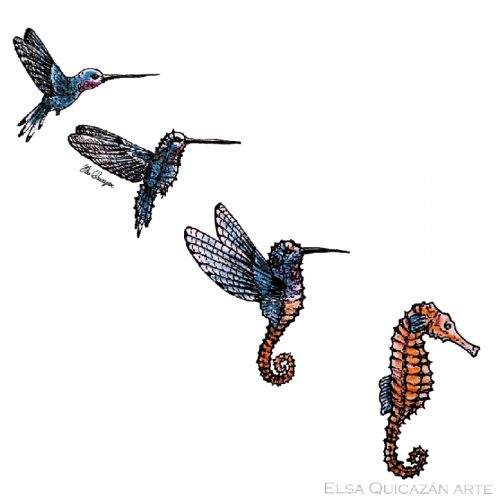
Has science always been an important part of your life?
Yes, science has always been an important part of my life. I remember talking to a friend in elementary school when we were about 10 years old, about our dream of becoming scientists. We both became scientists, one in medicine and the other in biology. I wanted to understand how animals work. Looking back at my childhood and youth, I see that the visits to my grandparents farm, and to the university, because of my parents’ jobs, contributed to this curiosity and help me to understand where I could get some of the answers.
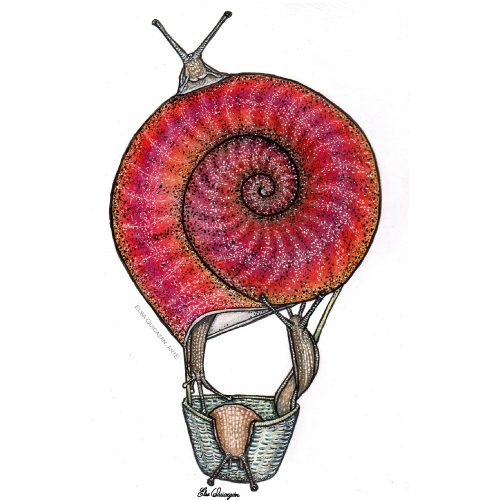
Inks, colored pencils and watercolors, 2020
And what about art – have you always enjoyed being creative?
Since I was little, I have enjoyed painting and creating objects. In one of the kindergarten reports, the teacher refers to my ability to express myself better with drawings than words at the time. I read this just a couple of years ago, and it warmed my heart knowing that drawing has been there even before I can remember. During life I have had the support and guidance from different people. My parents encouraged me and supported me with courses and with their own creative inputs. I took art courses in and out of the University while I studied Biology.
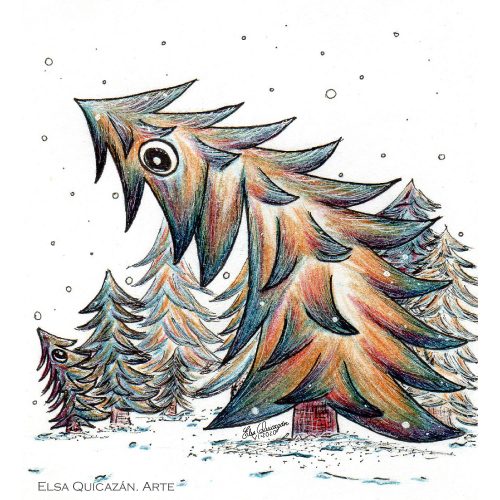
Color pencils and inks, 2020
What or who are your artistic influences?
Some of my artistic influences are Quino, a Latin American cartoonist with a very clean line. Rien Poortvliet, Alan Lee, and Brian Froud who illustrate natural and fantasy creatures. I especially remember a tales collection called “Cuenta Cuentos” (Salvat ed.) where each story was accompanied by rich visuals and a narrator’s recording. My classes with the Illustrator Esperanza Vallejo and Arts Profesor David Izquierdo had a special influence on my art because they both encouraged me and taught me how to explore and combine techniques, freeing my style.
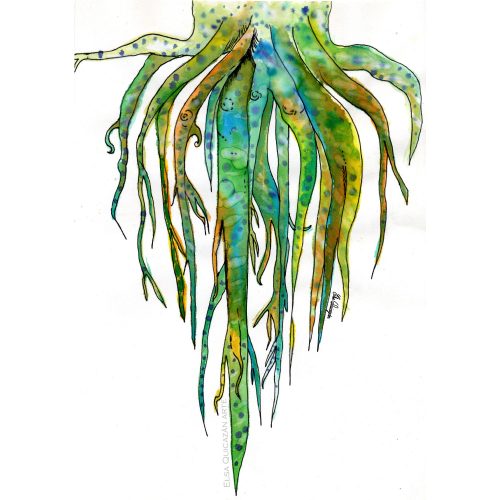
Ink and Ecolins (similar to watercolors), 2009 – 2010
How do you make your art?
Usually, I have the idea of illustrating an animal or a feeling and I just let that idea simmer in my subconscious for a while, until a shape comes up in my mind and I draft it. I often look at pictures of the animal that I want to represent and use them as references. Other times, I just have a quick idea and go drafting and finish the drawing over the draft itself. One of the illustrations that represent a feeling is the one with roots. This arose from the need to represent and see my own roots because at that time I was often moving from one country to another.
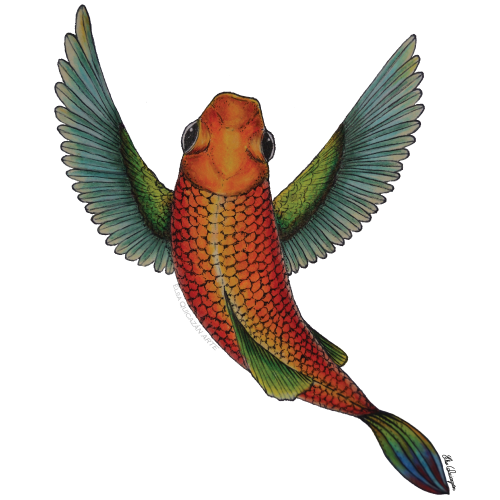
Color pencils and ink, 2019
Does your art influence your science at all, or are they separate worlds?
Up until recently my art and science were mostly separate, although I drew the biomechanics setups, which made them easier to build. But I feel that the freedom that I had while creating the figures of my first first-author paper on fish swimming allowed me to invite my art to dance with my science. I enjoyed the process so much and learnt tips and tricks of what a figure needs to have to be easily scannable, to be enjoyed by people with different color perceptions, and to tell a story by itself. I feel that figures can benefit so much from art and this combination converts them into an invitation for the public to approach our research.
“I feel that figures can benefit so much from art and this combination converts them into an invitation for the public to approach our research.”
Today, I work with art and science creating catchy images that invite conversation about what makes nature a powerful teacher. And I’m starting to collaborate with artists and engineers to enhance the public’s curiosity towards nature.
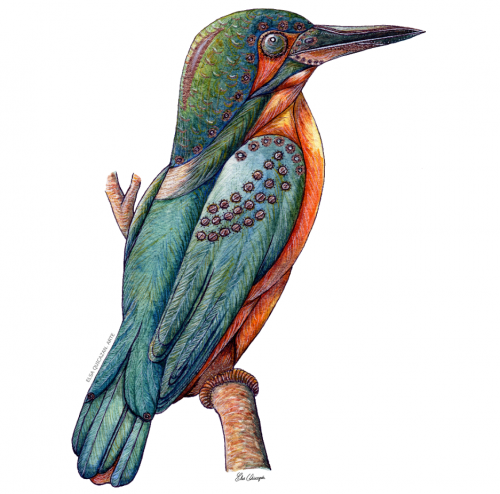
Watercolors and inks. 2020
What are you thinking of working on next?
Right now, I am developing a course on Biomimetic Illustration which is about learning to illustrate and portray nature’s solutions to human and environmental challenges. One example of this kind of illustration is seen in the Semi-mechanic Kingfisher that I illustrated for a blog post in my webpage Bioinspirada.com. The Kingfisher is the inspiration for the high-speed train redesign because of the shape of its beak and head that allows for a smoother passage between media with different densities. Therefore, in the illustration I represent this beautiful bird with a bionic head and beak.
I also plan to bring illustration to teaching biomechanics and biomimicry to children. Because one of my mid-term goals is to foster a curiosity for nature-inspired design from childhood. This is how I want to contribute to promoting the care and research of nature in future generations.
Check out Elsa’s homepage https://bioinspirada.com, Facebook page https://www.facebook.com/bioinspirada and Instagram @Bioinspirada
We’re looking for new people to feature in this series throughout the year – whatever kind of art you do, from sculpture to embroidery to music to drawing, if you want to share it with the community just email thenode@biologists.com (nominations are also welcome!).


 (2 votes)
(2 votes)